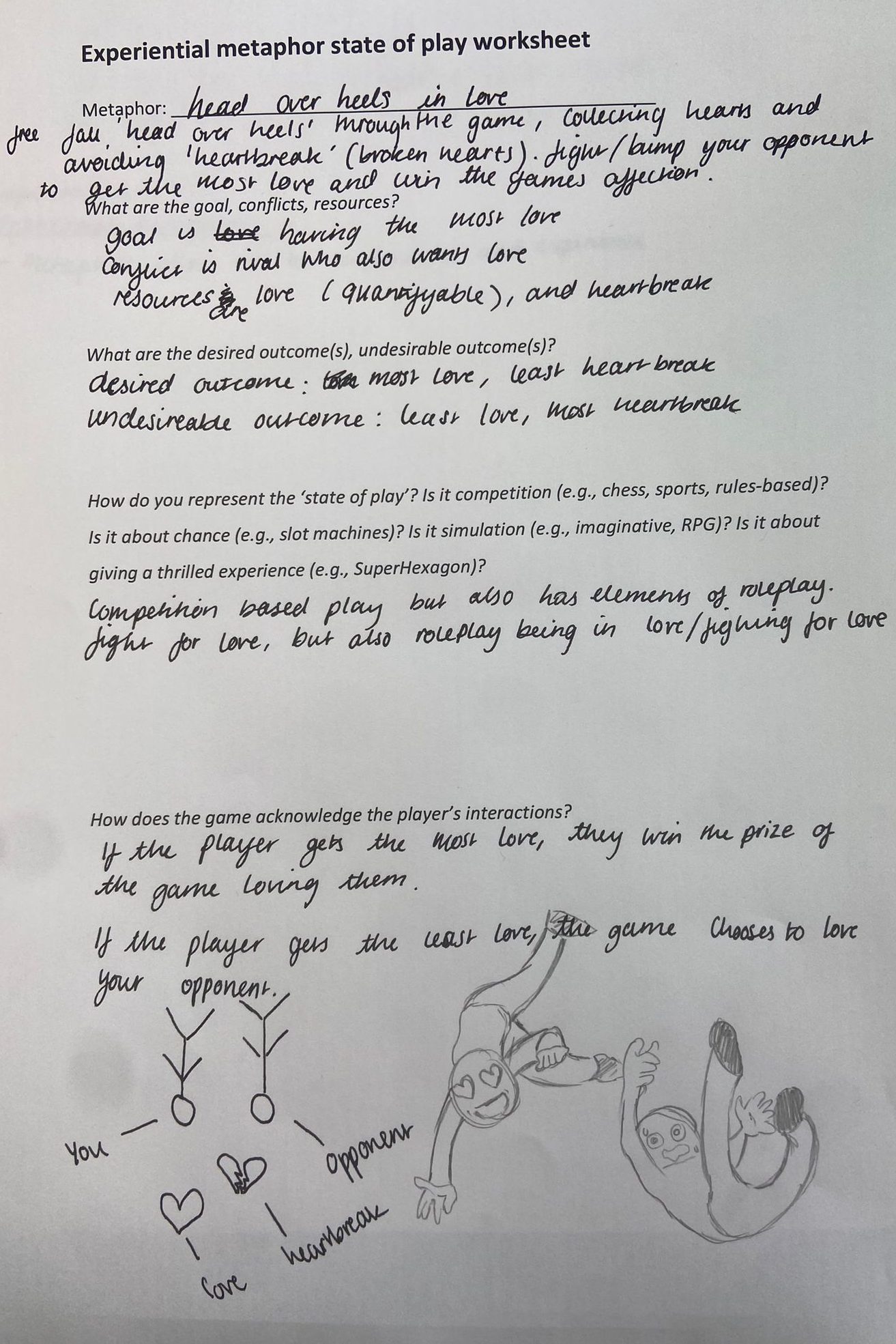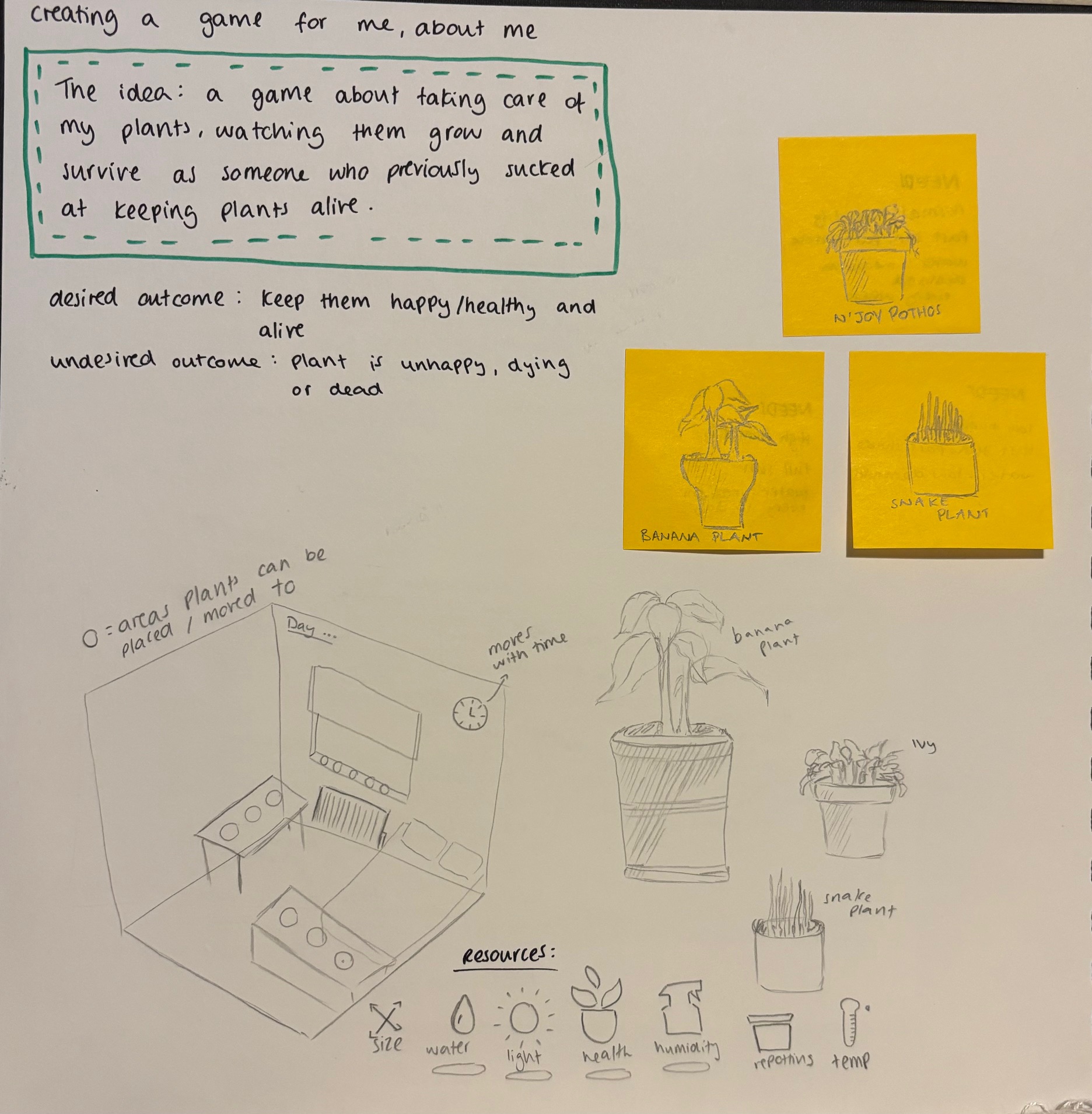What’s a GDD?
The first week entailed a draught of any and all inspiration to say the least.

After our welcome back session we were introduced to the brief by looking at what is a GDD (games design document), what makes a good GDD, and what questions do I need to be asking myself while I progress in my documentation.
I think the most important thing I gathered from the GDD talk was to make sure it had utility, and by that I mean it has to be clear, easily understandable and accessible to all members and departments of a team. This could mean being very detailed when describing sounds, or actions/gameplay elements to ensure that the sound designers or programmers know exactly what they’re doing, they need to be able to see the vision and execute it without confusion to avoid errors and miscommunication.
For more in depth research about GDDs, go here -> Understanding a GDD
Our first mini assignment of the semester was to create ‘barebone GDDs’ or ‘a one page GDD’ by generating a randomised logline and working in groups to expand on that game. My team’s logline was ‘An eerie stealth game set in snow-covered mountains.’.
The game focuses on its audio visuals to capture the ambience of the tundra – strong howling winds, sounds of footsteps approaching in the distance, heavy snowfall obstructing vision, dark visuals due to the night and no lighting.
Backstory: the protagonist is a small young fox separated from its mother, it must brave the harsh conditions of the tundra and find its way back to her.
Win/lose conditions: to win the player must survive until the sun rises by avoiding predators and poachers, the player loses if they are captured or killed, they survive by utilising their surroundings, the audio visual clues, and game mechanics.
Main mechanics: walk (slow), run (loud, uses stamina), burrow (hide beneath the snow)
We concluded the lecture by being encouraged to dig deep into our hearts and ask ourselves “what do I care about?”.
For some reason, that was the most daunting thing that could’ve been asked in that very moment.
I sat there, pen in hand. With the beginning of a mind map, that scary question circled. And nothing. So, I told myself – it’s too early for a solid idea right now anyway and called it a day.

The following day was the introduction to our option modules, for me that meant walking into my first Creative Writing lecture. The start of the session focused on how to defeat writers block through free writing where we let our minds run wild alongside our hands while we write, resulting in some not so pleasant dives into our inner psyches. The rest was then heavily tailored work on and about poems, where we looked at the work of celebrated Native American writer N. Scott Momaday and his poem The Delight Song of Tsoai-talee, where he highlights the significance of his identity and culture.
I stand in good relation to the earth
N. Scott Momaday
I stand in good relation to the gods
I stand in good relation to all that is beautiful…
…You see, I am alive, I am alive, I am alive.
The Essential Experience
On the Thursday, we outlined what the ‘essential experience’ is and how important it is to define that before we develop our game.
“You don’t need to perfectly replicate real experiences to make a good game. What you need to do is to capture the essence of those experiences for your game.”

A clear example of the essential experience being put to use is through autobiographical games, this is because they provide a first person experience through systems based thinking therefore players may feel more invested and responsible for their actions. These games can also be referred to as ’empathy games’ because of the way they center the majority and put emphasis on emotioneering, better explained as moving and guiding a player through emotional experiences.
Metaphors were discussed as a great way to get a message across without being literal, particularly experiential metaphors and how they allow us to understand an experience through comparison, for example – ‘love is a garden.’ or ‘love is a battlefield.’. As part of a mini workshop, we got into groups and picked a metaphor to generate a game idea from, my group landed on “Head over heels in love”. Can you tell we were feeling particularly loving that day?
After this group task, we moved on to a more independent workshop assignment to make a game for ourselves derived from our own everyday essential experiences. I chose the essential experience of taking care of my plants (my babies).
| goal | manage all owned plants to keep their needs met |
| conflict(s) | if plants are unwell and dying, this makes the self (very) upset |
| resources | water/thirst, room/space, light, temperature, humidity |
| desired outcome | keep all plants alive and healthy |
| undesired outcome | have unhappy, dying or dead plants |
| audiovisualisation of state of play | simple 2d clicker game. Player is able to water, repot plants and drag them to select areas inside of a bedroom (the desk, window sill, on top of drawers, floor etc). Each plant has its own individual wants and needs with meters to measure their state of satisfaction shown by abstract icons. Depending on where a player places their plants and how they interact with it, certain needs/resources will deplete or increase accordingly. |


We were encouraged to make quick paper prototypes of the game, on A3 paper I redrew the room that I had doodled onto my sketchbook and drew the resource icons on the side of the paper going down vertically. The post it note plants were to be used to simulate a mouse dragging the plants across a screen and placing them in the desire spot outlined by the circles drawn on the furniture of the room. The clock on the wall was to show players moving time, I’d also added a “Day: _” counter on the paper prototype so that players could keep track of time and better manage their plants.
Leave a Reply